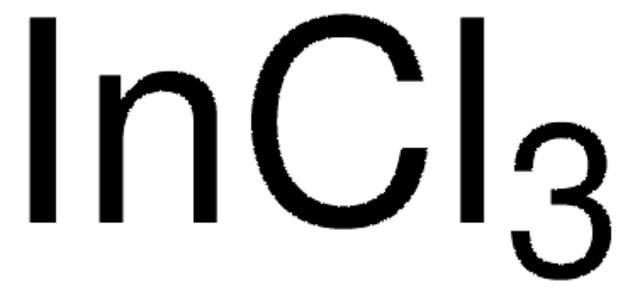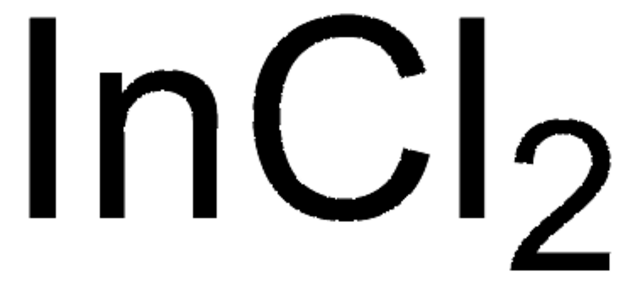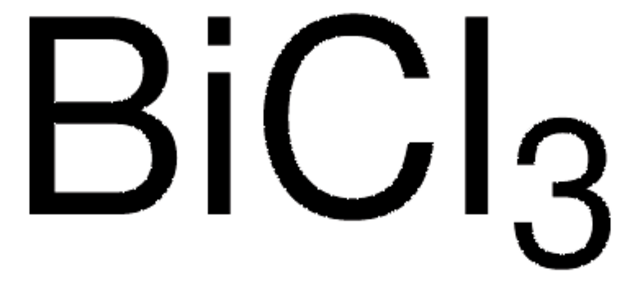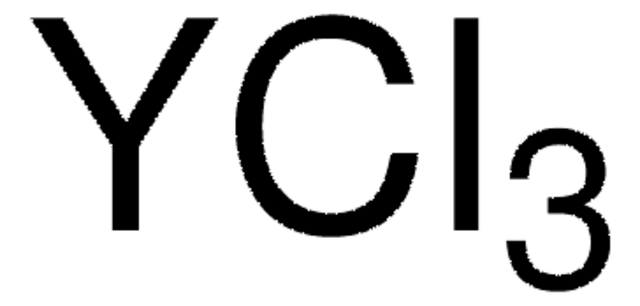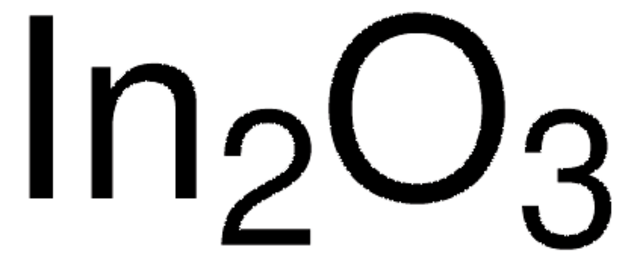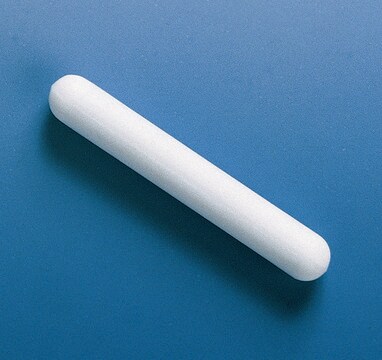203440
Indium(III) chloride
99.999% trace metals basis
Synonym(s):
Indium trichloride
About This Item
Recommended Products
grade
for analytical purposes
Assay
99.999% trace metals basis
form
powder or flakes (or chunks)
reaction suitability
reagent type: catalyst
core: indium
impurities
≤15.0 ppm Trace Metal Analysis
density
3.46 g/mL at 25 °C (lit.)
SMILES string
Cl[In](Cl)Cl
InChI
1S/3ClH.In/h3*1H;/q;;;+3/p-3
InChI key
PSCMQHVBLHHWTO-UHFFFAOYSA-K
Looking for similar products? Visit Product Comparison Guide
General description
Application
- As a catalyst for the preparation of 1,3-dithiolanes from aldehydes and ketones.
- For acylation of phenols, thiols, alcohols, and amines.
- As a precursor to fabricate Indium tin oxide(ITO) thin films for dye-sensitized solar cells.
- To prepare solution-processed oxide semiconductor thin-film transistors (OS TFTs) that can be used in display devices.
Signal Word
Danger
Hazard Statements
Precautionary Statements
Hazard Classifications
Aquatic Chronic 3 - Eye Dam. 1 - Skin Corr. 1C - STOT RE 1 Inhalation
Target Organs
Lungs
Storage Class Code
6.1D - Non-combustible acute toxic Cat.3 / toxic hazardous materials or hazardous materials causing chronic effects
WGK
WGK 3
Flash Point(F)
Not applicable
Flash Point(C)
Not applicable
Personal Protective Equipment
Choose from one of the most recent versions:
Already Own This Product?
Find documentation for the products that you have recently purchased in the Document Library.
Customers Also Viewed
Articles
Solvothermal synthesis is a method for preparing a variety of materials such as metals, semiconductors, ceramics, and polymers.
Spectral conversion for solar cells is an emerging concept in the field of photovoltaics, and it has the potential to increase significantly the efficiency of solar cells. Lanthanide ions are ideal candidates for spectral conversion, due to their high luminescence efficiencies and rich energy level structure that allows for great flexibility in the upconversion and downconversion of photons in a wide spectral region (NIR-VIS-UV).
Colloidal quantum dots (CQDs) are semiconducting crystals of only a few nanometers (ca. 2–12 nm) coated with ligand/surfactant molecules to help prevent agglomeration.
Our team of scientists has experience in all areas of research including Life Science, Material Science, Chemical Synthesis, Chromatography, Analytical and many others.
Contact Technical Service